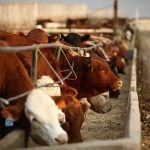A rational family sitting down for a budget discussion should raise savings, reduce the risk those savings face when invested, and make a point to keep up with every twist and turn of emerging U.S. tariff and tax policy.


Farm Financial Planner: In the churning world of U.S. import policy, tariffs stalk Canada’s bewildered farmers

Researchers can help producers develop pest management plans — but farmers’ help is needed to know which pests are where, and how many

In terms of grain quality, this University of Manitoba-led research finds weather and variety matter most

We examine an Idaho farmer’s program for crop self-defence

After each dry year, adapt your drought plan based on your experiences and what you learned

It doesn’t happen often on the Prairies but when it does product overuse is often to blame